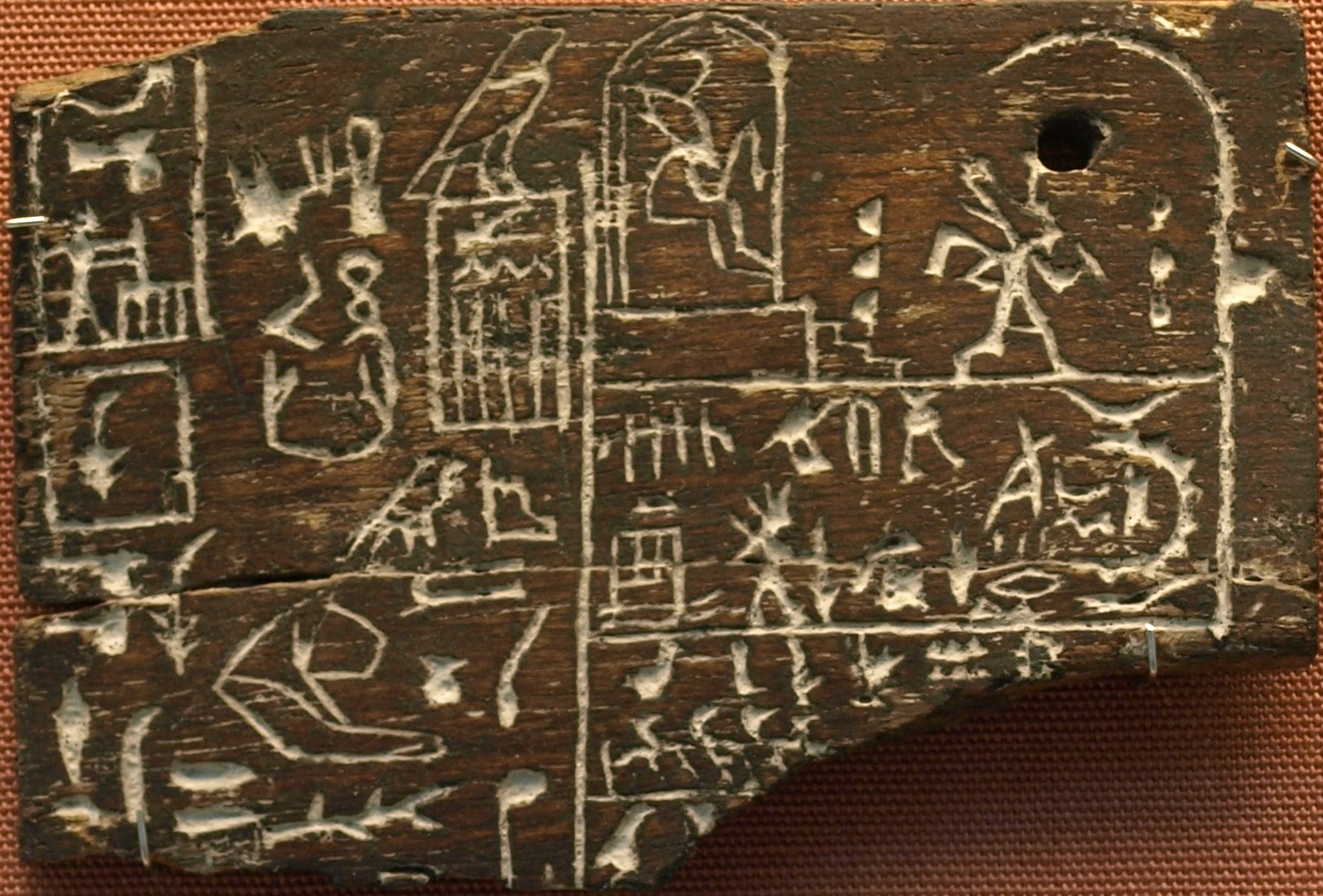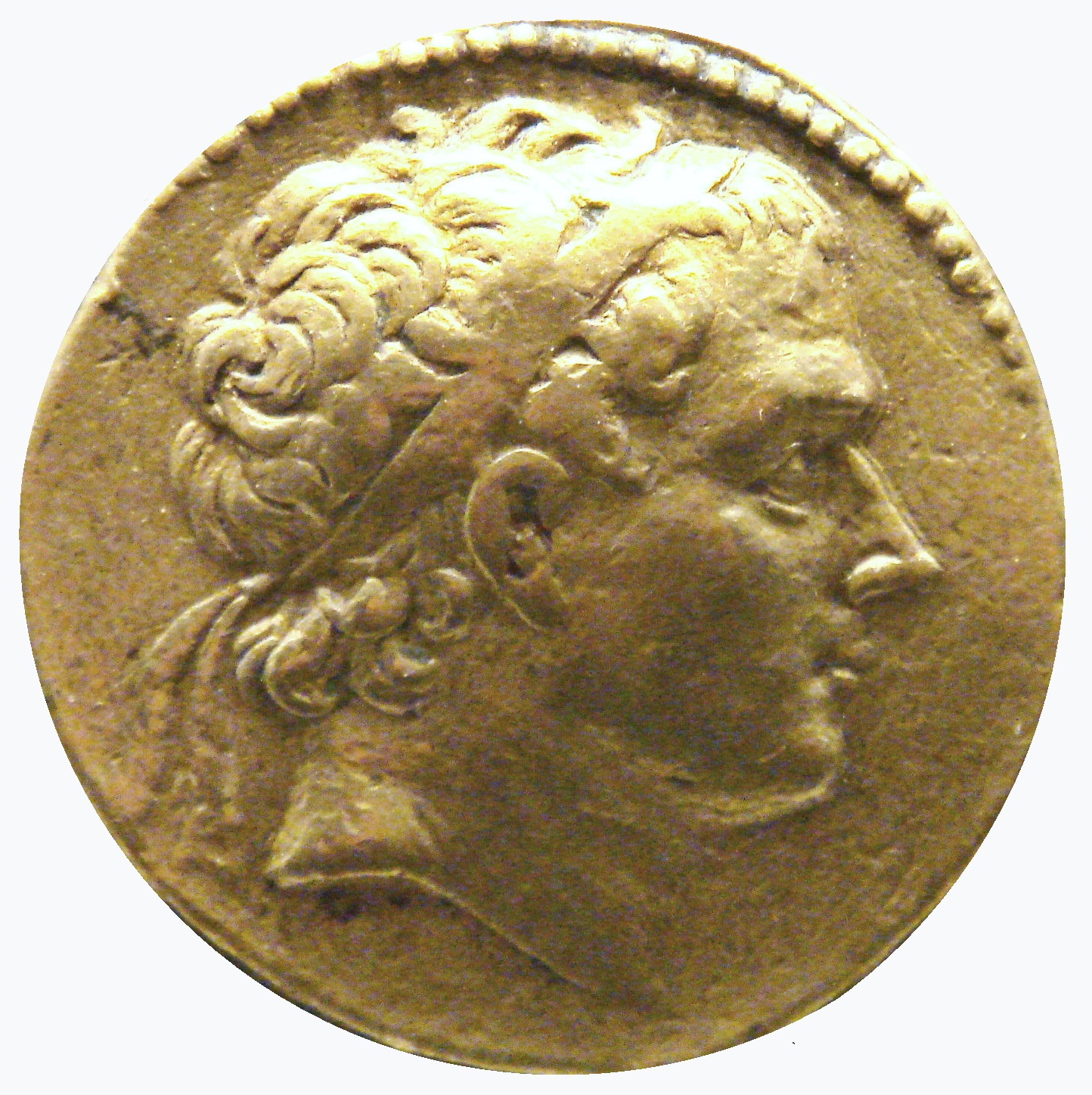|
Branch (hieroglyph)
The ancient Egyptian Branch hieroglyph, also called a Stick, is a member of the trees and plants hieroglyphs. The branch is an Egyptian language biliteral with the value ''(kh)t'', (khet)-(ḫt); it is an ideogram-(determinative), for wood, tree, and the linear measure (=100 cubits). The hieroglyph is described as a branch without leaves. As the value (kh)t, it is often complemented in a hieroglyphic block with ''kh''–("sieve"), Aa1 and ''"t"''–( bread bun). X1 Iconographic usage Pharaonic usage Pharaoh Nectanebo II used the branch hieroglyph for his Nomen name of ''Nakhthoreb'', "Strong is His Lord, Beloved of Hathor". Pharaoh Nectanebo I's nomen was ''Nekhtnebef'', "Strong is His Lord." Old Kingdom usage Two labels are known from the Old Kingdom showing usage of the ''branch hieroglyph'', one by Pharaoh Den, one by Semerkhet. The usage on the labels shows the branch hieroglyph in a more archaic form. Rosetta Stone usage of branch--"khet" In the 198 BC, ... [...More Info...] [...Related Items...] OR: [Wikipedia] [Google] [Baidu] |
Nubayrah Stele
The Nubayrah Stele is a mutilated copy of the Decree of Memphis (Ptolemy V) on a limestone stele. The same decree is found upon the Rosetta Stone. From 1848, it was known that a partial copy of the Decree was on a wall at the Temple of Philae, but overwritten in many places, by scenes, or damaged. The limestone stele is rounded at the top, is high, and wide.' The Nubayrah Stele is named for the present day town of Noubarya-(?) on the former Canopic branch of the Nile River; the town is southwest of Damanhur. The original ''"Nubayrah"'' was close to Damanhur. The Nubayrah Stele is located in the Egyptian Museum, no. 5576. Publication history The hieroglyph text was published, in the 1800s and early 1900s in five resources:Budge, (1989), 1929. p. 103. :#Urbain Bouriant, "La stèle 5576 du Musée du Boulaq-(now Egyptian Museum) et L'inscription de Rosette", in ''Recueil de travaux'', Paris, 1885, vol vi, pp 1-20. :#Baillet, ''Le décret de Memphis et les inscriptiones de Ros ... [...More Info...] [...Related Items...] OR: [Wikipedia] [Google] [Baidu] |
Typographic Ligature
In writing and typography, a ligature occurs where two or more graphemes or letters are joined to form a single glyph. Examples are the characters æ and œ used in English and French, in which the letters 'a' and 'e' are joined for the first ligature and the letters 'o' and 'e' are joined for the second ligature. For stylistic and legibility reasons, 'f' and 'i' are often merged to create 'fi' (where the tittle on the 'i' merges with the hood of the 'f'); the same is true of 's' and 't' to create 'st'. The common ampersand (&) developed from a ligature in which the handwritten Latin letters 'E' and 't' (spelling , Latin for 'and') were combined. History The earliest known script Sumerian cuneiform and Egyptian language, Egyptian hieratic both include many cases of character combinations that gradually evolve from ligatures into separately recognizable characters. Other notable ligatures, such as the Brahmic family, Brahmic abugidas and the Runes, Germanic bind rune, figure pr ... [...More Info...] [...Related Items...] OR: [Wikipedia] [Google] [Baidu] |
Greek Language
Greek ( el, label=Modern Greek, Ελληνικά, Elliniká, ; grc, Ἑλληνική, Hellēnikḗ) is an independent branch of the Indo-European family of languages, native to Greece, Cyprus, southern Italy (Calabria and Salento), southern Albania, and other regions of the Balkans, the Black Sea coast, Asia Minor, and the Eastern Mediterranean. It has the longest documented history of any Indo-European language, spanning at least 3,400 years of written records. Its writing system is the Greek alphabet, which has been used for approximately 2,800 years; previously, Greek was recorded in writing systems such as Linear B and the Cypriot syllabary. The alphabet arose from the Phoenician script and was in turn the basis of the Latin, Cyrillic, Armenian, Coptic, Gothic, and many other writing systems. The Greek language holds a very important place in the history of the Western world. Beginning with the epics of Homer, ancient Greek literature includes many works of lasting impo ... [...More Info...] [...Related Items...] OR: [Wikipedia] [Google] [Baidu] |
Demotic (Egyptian)
Demotic (from grc, δημοτικός ''dēmotikós'', 'popular') is the ancient Egyptian script derived from northern forms of hieratic used in the Nile Delta, and the stage of the Egyptian language written in this script, following Late Egyptian and preceding Coptic. The term was first used by the Greek historian Herodotus to distinguish it from hieratic and hieroglyphic scripts. By convention, the word "Demotic" is capitalized in order to distinguish it from demotic Greek. Script The Demotic script was referred to by the Egyptians as ', "document writing," which the second-century scholar Clement of Alexandria called , "letter-writing," while early Western scholars, notably Thomas Young, formerly referred to it as "Enchorial Egyptian." The script was used for more than a thousand years, and during that time a number of developmental stages occurred. It is written and read from right to left, while earlier hieroglyphs could be written from top to bottom, left to right, or ... [...More Info...] [...Related Items...] OR: [Wikipedia] [Google] [Baidu] |
Decree Of Memphis (Ptolemy V)
The Rosetta Stone is a stele composed of granodiorite inscribed with three versions of a decree issued in Memphis, Egypt, in 196 BC during the Ptolemaic dynasty on behalf of King Ptolemy V Epiphanes. The top and middle texts are in Ancient Egyptian using hieroglyphic and Demotic scripts respectively, while the bottom is in Ancient Greek. The decree has only minor differences between the three versions, making the Rosetta Stone key to deciphering the Egyptian scripts. The stone was carved during the Hellenistic period and is believed to have originally been displayed within a temple, possibly at Sais. It was probably moved in late antiquity or during the Mamluk period, and was eventually used as building material in the construction of Fort Julien near the town of Rashid (Rosetta) in the Nile Delta. It was found there in July 1799 by French officer Pierre-François Bouchard during the Napoleonic campaign in Egypt. It was the first Ancient Egyptian bilingual text recov ... [...More Info...] [...Related Items...] OR: [Wikipedia] [Google] [Baidu] |
Baker's Tool (hieroglyph)
The total number of distinct Egyptian hieroglyphs increased over time from several hundred in the Middle Kingdom to several thousand during the Ptolemaic Kingdom. In 1928/1929 Alan Gardiner published an overview of hieroglyphs, Gardiner's sign list, the basic modern standard. It describes 763 signs in 26 categories (A–Z, roughly). Georg Möller compiled more extensive lists, organized by historical epoch (published posthumously in 1927 and 1936). In Unicode, the block ''Egyptian Hieroglyphs'' (2009) includes 1071 signs, organization based on Gardiner's list. As of 2016, there is a proposal by Michael Everson to extend the Unicode standard to comprise Möller's list. Subsets Notable subsets of hieroglyphs: * Determinatives * Uniliteral signs * Biliteral signs * Triliteral signs * Egyptian numerals Letter classification by Gardiner List of hieroglyphs In Unicode Unicode character names follow Gardiner's sign list (padded with zeroes to three digits, i.e. Gardin ... [...More Info...] [...Related Items...] OR: [Wikipedia] [Google] [Baidu] |
Km (hieroglyph)
The Egyptian hieroglyph for "black" ( 𓆎) in Gardiner's sign list is numbered I6. Its phonetic value is '. The ''Wörterbuch der ägyptischen Sprache'' ('Dictionary of the Egyptian Language') lists no less than 24 different terms of km indicating 'black' such as black stone, metal, wood, hair, eyes, and animals, and in one instance applied to a person's name. The most common explanation for the hieroglyph is under the Gardiner's Sign List, section I for "amphibious animals, reptiles, etc" is a crocodile skin with spines. Rossini and Schumann-Antelme propose that the ''crocodile skin'' hieroglyph actually shows claws coming out of the hide. Besides 'black', the alternate use of the hieroglyph is for items terminating, coming-to-an-end, items of completion, hence a reference to charcoal, burning to its ending. ''km.t'' Ancient Egypt is commonly referred to as 'km.t' (one variant: 𓆎𓅓𓏏𓊖), believed to be a reference to the black Nile Delta earth. '𓊖' (the de ... [...More Info...] [...Related Items...] OR: [Wikipedia] [Google] [Baidu] |
Spine With Fluid (hieroglyph)
The ancient Egyptian hieroglyph of a Spine issuing fluid is Gardiner sign listed no. F40 for the ''animal spine, fluid falling from each end''. Another hieroglyph, Gardiner F39 shows only half of the spine, F39-(referring to 'dignity', or 'to be revered'). The ''Spine with fluid'' hieroglyph is used in Egyptian hieroglyphs as a biliteral with the language value of Aw-(''Au'') and consists of the Egyptian vowel uniliterals of a, the vulture, Gardiner G1-(birds), G1 and w, the quail chick, Gardiner G43, G43 The use of the ''Spine with fluid'' hieroglyph is for words showing "length", as opposed to 'breadth', (Egyptian ''usekh''-(breadth, width)-for example, the Usekh collar). Some example words for 'length' are: ''to be long, length, to extend, extended''; and for ''to expand, to dilate'', words like: ''joy, gladness, pleasure, delight''.Budge. ''An Egyptian Hieroglyphic Dictionary'', ''au'', p. 2 (of 464 pp.) See also * Gardiner's Sign List#F. Parts of Mammal ... [...More Info...] [...Related Items...] OR: [Wikipedia] [Google] [Baidu] |
Ankh Wedja Seneb
Ankh wedja seneb () is an Egyptian language, Egyptian phrase which often appears honorific, after the names of pharaohs, in references to their household, or at the ends of letters. The formula consists of three Egyptian hieroglyphs without clarification of pronunciation, making its exact grammatical form difficult to reconstruct. It may be expressed as "life, prosperity, and health", but Alan Gardiner proposed that they represented verbs in the stative form: "Be alive, strong, and healthy". Components Egyptian hieroglyphs did not record vowel values, making the exact pronunciation of most words unknowable. The conventional Egyptological pronunciations of the words , , and are ''ankh'', ''wedja'' and ''seneb'' respectively. *Ankh means "life" and "to have life", "to live", particularly with regard to the longevity and resurrection of the ancient Egyptian deities and pharaohs *Wedja means "to be whole" or "intact", with connotations of "prosperity" and "well-being" *Seneb means ... [...More Info...] [...Related Items...] OR: [Wikipedia] [Google] [Baidu] |
Ptolemy V
egy, Iwaennetjerwymerwyitu Seteppah Userkare Sekhem-ankhamun Clayton (2006) p. 208. , predecessor = Ptolemy IV , successor = Ptolemy VI , horus = '' ḥwnw-ḫꜤj-m-nsw-ḥr-st-jt.f''''Khunukhaiemnisutkhersetitef'' The youth who has appeared as king on his father's throne , horus_hiero = H-wn:n-nw:W-A17-xa:a:W*Z4-Aa15:sw*A43-D2:Z1-Q1-t:O1-t:f:Z1:f , nebty = ''wr-pḥtj smn-tꜢwj snfr-tꜢmrj mnḥ-jb-ḫr-nṯrw''''Werpehty Sementawy Senefertameri Menekhibkhernetjeru''The one great of strength, who has established the Two Lands and made Ta-mery perfect (by) being efficacious before the gods , nebty_hiero = wr:r-F9*F9:Z9:D40-s-U32-wAD-M24-s-nfr-N16:N21\*N21:O5*t:O49-mnx-ib:Z1-x:r-nTr*Z1-nTr*Z1-nTr*Z1 , golden = '' wꜢḏ-Ꜥnḫ-n-ḥnmmt nb-ḥbw-sd-mj-ptḥ jty-mj-rꜤ''''Wadjankhenkhenmemet Nebkhebusedmiptah Itymire'' The one who has made the life of mankind flourish, a possessor of Sed festivals like Ptah and a sovereign like Ra , golden_h ... [...More Info...] [...Related Items...] OR: [Wikipedia] [Google] [Baidu] |
Bone-with-meat (hieroglyph)
The ancient Egyptian Bone-with-meat hieroglyph ( Gardiner F44) represented: "ancestry, inherit", and phonetic ''isw, iw' '' (inherit, etc.); a determinative for the femur, (iw'); and ''swt'', for the tibia.Kamrin, 2004. F44, p. 238. The Old Kingdom usage on slab steles, from the middle of the 3rd millennium BC, shows the proto-type form of the hieroglyph as a 'cut of meat', much like the spare ribs or beef ribs of the present era. The slab stela shows the bone as a multiple of two curved bones, much like the spare rib. An example of a wall relief scene from Edfu at the Temple of Edfu shows a cartouche with the ''joint of meat'' hieroglyph. Another less common hieroglyph pictured within the cartouche is the vertical standing ''mummy hieroglyph.'' See also * Gardiner's Sign List#F. Parts of Mammals *List of Egyptian hieroglyphs The total number of distinct Egyptian hieroglyphs increased over time from several hundred in the Middle Kingdom to several thousand during the Pt ... [...More Info...] [...Related Items...] OR: [Wikipedia] [Google] [Baidu] |





